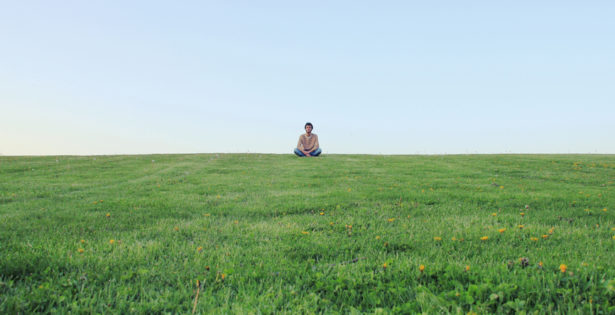I’ve been treating people for only 17 years, but in that small period of time there has been a change in the prevalence of certain problems. Every year, I see more people with anxiety, depression, poor mental focus, and difficulty sleeping. It’s possible that the incidence of these challenges isn’t really increasing. It could just be a matter of who my clients are, or a case of having a vocabulary to define these issues where one didn’t previously exist. But I don’t think so.
I think there is an actual increase in these issues, and there are several reasons why, but one stands out to me above all others: lack of space.
About a year ago, Briana and I started working on a book to teach people about whole-life wellness – wellness that goes beyond a healthy body and mind. Our methodology arose from our backgrounds in Eastern medicine. The systems we practice (Ayurveda and Traditional Chinese Medicine [TCM]) are founded on philosophies of dynamic balance. In TCM there’s the two-part balance of yin and yang. In Ayurveda there’s a three-part balance of sattva, rajas, and tamas. And both systems also express balance in terms of five elements. For our system, we chose an expression of balance based on three elements: Structure, Sweetness, and Space.
Sweetness is our term for all the feel-good, nourishing activities and practices of life. Building sweetness depends not just on deliberately engaging in more time with friends and long baths. It’s also a matter of finding the sweet and recognizing the beauty within all kinds of daily tasks, and relishing it.
Structure is the means by which we organize and plan a life that works (without feeling crazy and overwhelmed). It’s how we achieve goals, enact change, do our work, and bring our purpose into the world. Some people need more structure, others need less. The ideal is structure that’s healthy, efficient, and graceful.
As we were deep in conversation about how to distill our key concepts into something simple, the words Sweetness and Structure came to us in a flash. But we both felt there was a third element yet to be revealed. We tossed ideas back and forth for a while, then decided to sit quietly with it for a few minutes. And in that space, the word “space” entered both our minds simultaneously. “Of course,” we said, “space.”
When first explaining this concept to others, Space was a little hard to put a finger on, like space itself. And yet, nobody failed to understand when I said, “It’s what we’re filling – every spare moment of it – by keeping ourselves perpetually mentally engaged.” When you sit down on the toilet and experience disappointment at the realization that you don’t have your phone with you, that should be a red flag.
Life would feel meaningless without Sweetness. You’d never get anything done without Structure. And without Space . . . you’d go crazy (maybe a little, maybe a lot).
Space provides the opportunity to connect with our Highest Self. To bask in the peaceful vastness that we are. To experience that we are so much more than our thoughts. Space allows us the openness to receive – to receive love, healing, and inspiration. Space is the freedom in which we can let life be however it is, without needing to resist it, cling to it, or change it.
When there’s no Space in our lives, there’s no perspective to our thoughts. It’s like having daytime television playing endlessly in our brain. It’s easy for anxiety and depression to arise in such a vacuum. It’s also easy for us to respond to these unpleasant thoughts and feelings by getting even more immersed, not allowing any Space for fear of confronting what we’re experiencing.
The only absolute solution to these afflictions, in my opinion, is to access Space. In Space, you’ll remember who you really are and what’s really true. And the truth is, you’re okay. Life is beautiful. Only through Space can the mind’s distorted lens be seen for what it is. As your breath deepens, the stream of thoughts slows down, and the volume decreases.
I would like you to make a little Space in your week. For a few minutes, stop consuming and analyzing ideas, and just put your bare feet on the ground. Leave your electronic devices at home. And please trust me when I say that if you experience even the tiniest inkling of peace, perspective, or upliftment, there is so much more where that came from.
Love,
Dr. Peter Borten



 Cart
Cart

Beautiful and such perfect timing, thank you
You’re welcome!
Thank you for this important message and the prior ones! I so look forward and enjoy each day’s gift. Reading and reflecting on the messages you Presbyterian us every day helps me stop and think. Very often I smile as I feel so blessed on so many levels. Thank you
I’m so glad to hear it!
Thank you Dr. BORTEN , I really needed to hear this . I have so many things going on in my life and my child’s that I’m trying to fix I forget to stop and breathe. I love reading the weekly dragon tree . It helps me stay grounded and focused and remember to slow down and take time out for me. Thank you ☺❤
You’re very welcome!
Your thoughts and writing touch my being and wish all my love ones would be still and read this,then just do it. Thank you for sharing.
Thanks, Linda. I’m glad it spoke to you. Perhaps you can lead your loved ones by example if it’s unlikely that they’ll read this themselves. Be well.